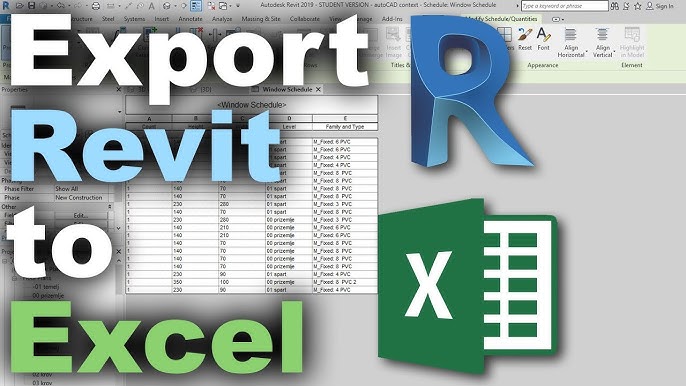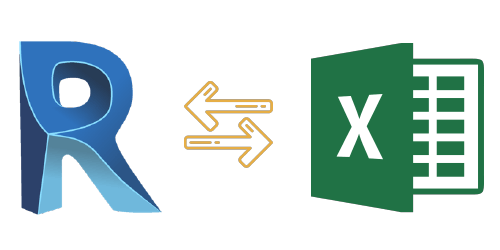Revit Add Ins: Broadening Your Design Capacities
Wiki Article
Revit Accelerator: Excel Combination Approaches for Improving Efficiency and Cooperation
Are you aiming to increase your performance and partnership while utilizing Revit? Look no additional! In this short article, we will discover the advantages of incorporating Excel right into your Revit workflows. Discover just how you can improve your procedures, optimize collaboration, and also learn sophisticated techniques for increasing performance. Plus, we will certainly share finest practices for perfectly integrating Excel right into your Revit tasks. Get prepared to supercharge your Revit experience with our Revit Accelerator: Excel Assimilation Strategies!Advantages of Excel Integration in Revit
The benefits of Excel assimilation in Revit are countless and can significantly boost efficiency and collaboration. By effortlessly connecting these two effective devices, you can simplify your process and save important time. With Excel integration, you can conveniently import and export information in between Revit and Excel, allowing you to utilize the strengths of both programs.
One more benefit of Excel integration is the ability to develop vibrant timetables and records. By connecting your Revit model to an Excel spreadsheet, any changes made in Revit will instantly update in the equivalent Excel documents. This makes it very easy to produce up-to-date routines, amount launches, and various other project documents.
Excel combination in Revit likewise enables better collaboration among group members. With the capability to import and export data, you can quickly share details with colleagues who might not have accessibility to Revit. This promotes effective interaction and permits much better sychronisation and decision-making.
Improving Operations With Revit and Excel
Streamlining process with Revit and Excel can greatly boost efficiency and cooperation. By incorporating the capabilities of Revit and Excel, you can effortlessly transfer information between the 2 applications, removing the demand for hand-operated information access and decreasing the threat of mistakes.
Making Use Of Revit and Excel together permits you to take advantage of the toughness of each program - revit add ins. You can export information from Revit right into Excel, where you can perform complex estimations, develop charts and charts, and evaluate the info in an extra effective and organized manner. On the various other hand, you can import data from Excel right into Revit, allowing you to swiftly upgrade your versions and documents based upon adjustments made in Excel
The integration of Revit and Excel also promotes cooperation amongst team participants. By sharing Excel data, you can conveniently interact and team up on design and construction-related information. This improves coordination and ensures that every person is dealing with the most current info.
Maximizing Collaboration With Excel and Revit
To optimize collaboration with Excel and Revit, you can effortlessly share and update layout and construction-related data with your group. With just a couple of clicks, you can import Excel spread sheets into your Revit design, permitting you to easily accessibility and adjust the data.Among the key benefits of making use of Excel in combination with Revit is the capability to upgrade data in both programs at the same time. Any type of modifications made in Excel will immediately be shown in Revit, and the other way around. This ensures that everybody is collaborating with one of the most up-to-date details, avoiding complication and saving useful time.
Furthermore, Excel gives powerful tools for assessing and arranging information, which can considerably boost your partnership efforts. You can create custom-made reports and graphes in Excel, assisting you to envision and connect essential project details successfully. This can be particularly valuable when presenting information to stakeholders or making informed decisions based on project metrics.
Advanced Strategies for Increasing Performance in Revit Making Use Of Excel
By utilizing advanced methods in Revit, you can significantly increase your efficiency by leveraging the power of Excel. With Revit's Excel assimilation feature, you can link Excel spread revit tool sheets directly to your Revit model, enabling you to quickly handle and update data.
In addition, you can use Excel macros to automate recurring tasks in Revit (revit tools). Macros enable you to tape a series of actions and play them back with a single click, saving you effort and time. As an example, you can create a macro to instantly produce room schedules or update parameter values in mass.
Ideal Practices for Excel Integration in Revit
Utilizing Excel as an information monitoring tool in Revit enables for efficient administration and upgrading of data. By incorporating Excel into your Revit workflow, you can improve your processes and enhance productivity. One of the very best practices for Excel combination in Revit is to develop a clear and arranged data framework. This implies developing your Excel spreadsheets with columns and rows that align with the parameters and classifications in your Revit job. By doing so, you can quickly import and export data in between Revit and Excel with no complication. One more finest method is to make use of formulas and functions in Excel to automate calculations and information adjustment. This can conserve you time and make sure accuracy in your information management. In addition, it is essential to consistently upgrade your Excel spread sheets and sync them with your Revit task. In this manner, any modifications made in Revit will be mirrored in your Excel data, and vice versa. By following these finest practices, you can properly use Excel as a data monitoring device in Revit and increase your performance and partnership.Verdict
In conclusion, incorporating Excel with Revit can greatly improve efficiency and collaboration in the style procedure. By leveraging the power of Excel, Revit individuals can attain higher levels of performance and cooperation in their tasks.With Excel integration, you can easily import and export information in between Revit and Excel, enabling you to utilize the toughness of both programs.
One of the crucial benefits of Excel integration is the capability to use Excel formulas and functions within Revit. By linking your Revit design to an Excel spread sheet, any changes made in Revit will automatically upgrade in the corresponding Excel data. On the various other hand, you can import information from Excel into Revit, allowing you to quickly update your versions and documents based on modifications made in Excel.
With Revit's Excel combination function, you can link Excel spread sheets straight to your Revit model, enabling you to easily manage and update information.
Report this wiki page